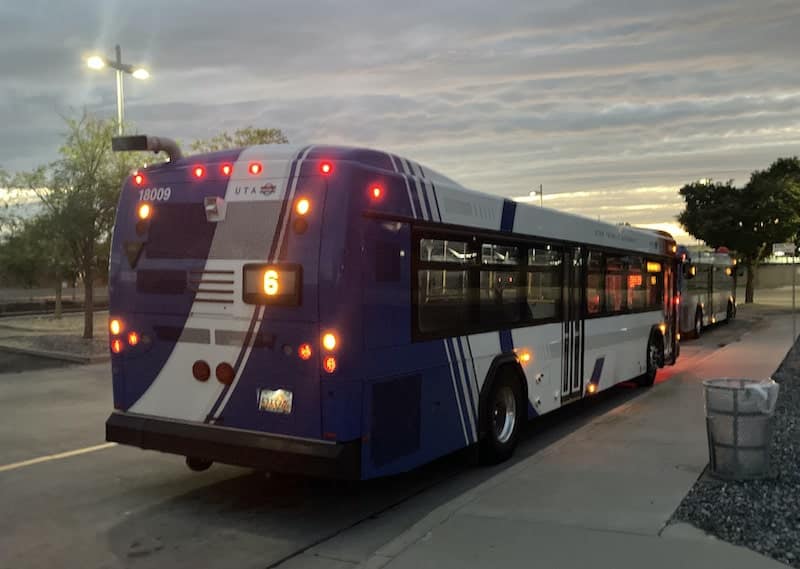
It’s the end of the line for the Number 6 bus.
More than half a dozen people gathered at UTA’s central station on August 6 to mark the occasion and take one last trip.
“Commemorating a bus route that is about to be discontinued is a very fun idea,” said rider Sam Thomas.
The route’s closure marks the end of mass transit along Sixth Avenue, which has seen public vehicles lumber along in one form or another for more than 100 years.
The route through the Avenues neighborhood had earlier been serviced by the No. 2 bus line, itself a descendent of the old No. 2 street car. Historical records show the street car had been in service since at least 1921.
“I’m gonna miss the 6 bus,” said Evelyn Lamb, who organized the trip.
But Lamb is excited about the new schedule, which boosts service on routes 209 and 1. The buses now run every 15 minutes and continue well into the night.
“I really like the 209 connecting to the bars and restaurants in Sugarhouse and South Salt Lake, and even down to Millcreek,” said Lamb.
Increased service for the Avenues along the north and south corridor was a key part of UTA’s strategy, which saw the elimination of 22 routes on August 7. Another 42 rail and bus lines also saw changes.
Utah Transit Authority has had to adapt to a decline in ridership and available bus drivers related to Covid. It’s hoped the changes will spur participation in the Avenues, which has been identified as having potential for more ridership. The area was noted for its lack of cul-de-sacs, high number of students, people of color, and those without cars.
“This is a neighborhood where people are more receptive to mass transit,” said Eric Callison, Utah Transit Authority’s manager of service planning.

Not everyone. After the new routes were announced, flyers were distributed opposing the new traffic. A group of residents presented their own scaled-back plan at a meeting of the Greater Avenues Community Council in June.
“People don’t want things to be different, even if they’re better,” said Kyle Holland, who co-hosts a podcast at the University of Utah about mass transit called The Red Line.
The bus jostles down from the Avenues and climbs up to University of Utah Hospital, the half-way point of the trip. There’s a cheer and someone wonders if they should all get out. But there’s the question of how to get home. This is, after all, the last run. The mood grows somber.
Lamb remains upbeat. A plate of cookies sits on her lap. It’s her mother’s recipe — oatmeal, chocolate chips, dried cherries and pecans.
But the plate is still full. Sadly, riders eating cookies is not a sanctioned activity of the Utah Transit Authority.
“You’re not technically allowed to eat on the bus,” Lamb said, with a sly grin. “But some people have taken them and I don’t know if they have been consumed on the bus.”
As the bus continues along the end of its route, the little group grows smaller. Another passenger gets off, making a call for trans rights that elicits another cheer.
Eventually the bus comes to Lamb’s stop and she exits as well. There are now only a few people left. Among them is Will Watkins, who keeps a spreadsheet documenting all of his trips.
“I am a little bit of a transit nerd, especially for the UTA,” said Watkins.
The bus ride is his 394th trip since last August. After the trip, an annotation on his spreadsheet will read simply, “Final 6 bus.”
RELATED CONTENT
Utah’s Little Cottonwood Canyon: A Gondola Wins, Granolas Lose
How More Bicycle Infrastructure Could Help Solve Our Affordable Housing Crisis
Utah’s Top 5 Walkable Neighborhoods: Communities Where Kids Can Walk to School
PediCab Legacy in Downtown Salt Lake City
SUPPORT LOCAL JOURNALISM AND SUBSCRIBE TO PRINT MAGAZINE
Subscribe to Utah Stories weekly newsletter and get our stories directly to your inbox





